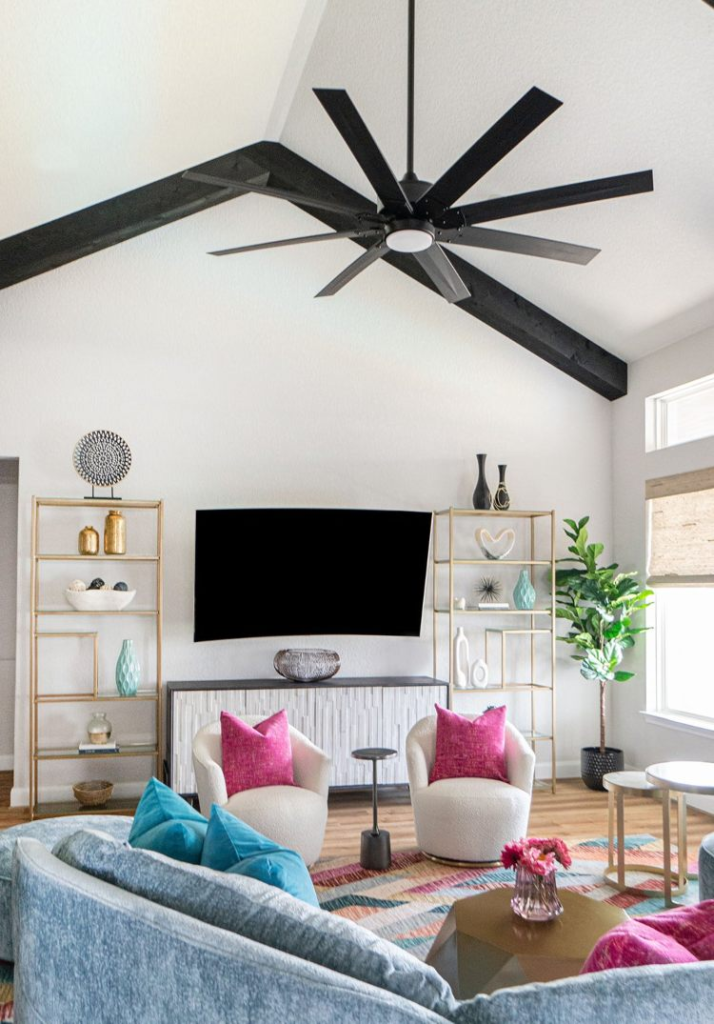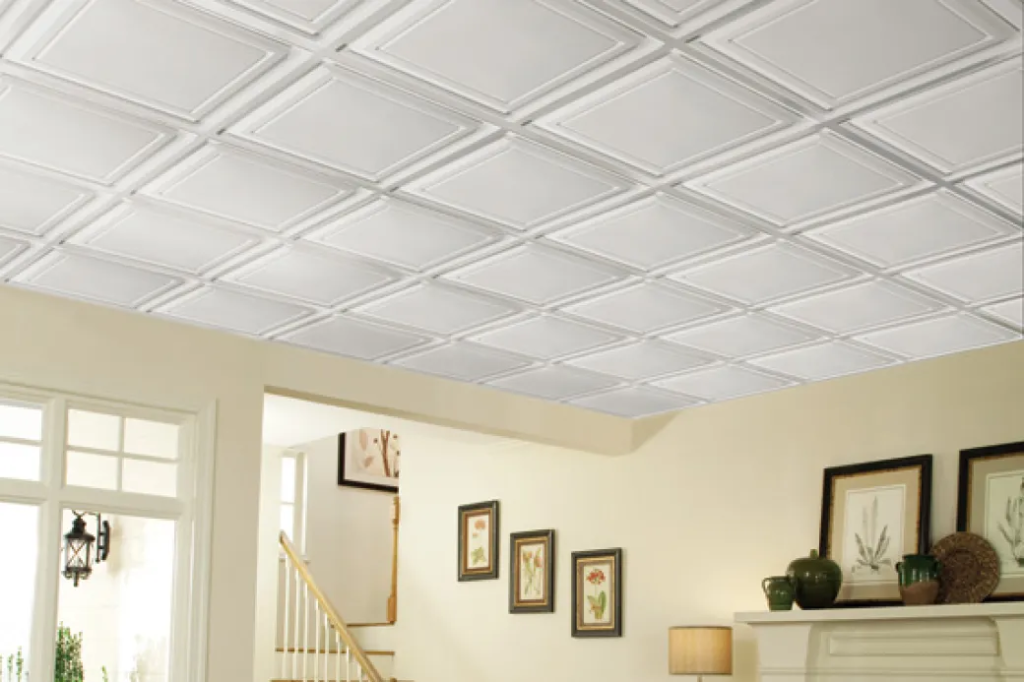In the world of modern HVAC solutions, the ceiling mounted ductless mini split stands out as a versatile and efficient option for maintaining a comfortable indoor environment. Whether you’re upgrading your home’s climate control system or outfitting a new space, this innovative technology offers numerous benefits. In this article, we’ll explore what a ceiling mounted ductless mini split is, how it works, its advantages, and why it could be the ideal solution for your home.

What is a Ceiling Mounted Ductless Mini Split?
A ceilings mounted ductless mini split is a type of HVAC system that provides heating and cooling without requiring extensive ductwork. Unlike traditional systems that rely on centralized ducts, this setup uses an indoor air-handling unit mounted on the ceiling and an outdoor compressor. The two units are connected by refrigerant lines, allowing for efficient temperature control.
This configuration is particularly advantageous for homes with limited wall space or architectural constraints that make wall-mounted units impractical. Ceiling-mounted units blend seamlessly into interiors, making them an aesthetically pleasing option for modern homes and offices.
Read too: Bathroom Flooded Through the Ceiling: A Comprehensive Guide
How Does a Ceiling Mounted Ductless Mini Split Work?
The ceilings mounted ductless mini split operates on a straightforward principle. Here’s a breakdown:
- Refrigerant Flow: The outdoor compressor pumps refrigerant to the indoor unit.
- Heat Exchange: Depending on the mode (heating or cooling), the refrigerant absorbs or releases heat.
- Air Distribution: The ceiling-mounted unit disperses conditioned air evenly across the room.
- Thermostatic Control: A remote control or smart thermostat adjusts the temperature and fan speed to meet your comfort needs.
Because of its ductless design, this system reduces energy loss commonly associated with ducted systems, leading to higher efficiency and lower energy bills.
Advantages of a Ceiling Mounted Ductless Mini Split
1. Space-Saving Design
One of the biggest advantages of a ceiling mounted ductless mini split is its compact and unobtrusive design. Unlike wall-mounted units, which may interfere with décor or take up valuable wall space, ceiling-mounted units are tucked away and do not detract from the aesthetics of the room.
2. Energy Efficiency
Ductless systems are known for their energy efficiency. Since there are no ducts, the energy losses that occur in traditional systems are eliminated. Additionally, modern mini splits often come with inverter technology that allows the compressor to adjust its speed based on demand, ensuring optimal energy use.
3. Zoned Heating and Cooling
Another significant advantage is the ability to create zones within your home. Each indoor unit operates independently, allowing you to heat or cool specific rooms as needed. This can result in substantial energy savings, especially in homes where certain areas are used more frequently than others.
4. Quiet Operation
Many ceiling mounted ductless mini splits operate quietly, making them ideal for bedrooms, offices, or any space where noise might be a concern.
5. Improved Indoor Air Quality
These systems often include advanced filtration to remove allergens, dust, and other pollutants from the air, contributing to a healthier indoor environment.
Installation Process
While professional installation is recommended, understanding the steps involved can give you a better idea of what to expect.
- Assessment: A technician evaluates your space to determine the optimal placement for the indoor and outdoor units.
- Mounting: The indoor unit is installed in the ceiling, typically using brackets or recessed mounting for a flush appearance.
- Connection: Refrigerant lines, electrical wiring, and drainage pipes are routed between the indoor and outdoor units.
- Testing: The system is tested to ensure proper operation, and the thermostat is calibrated to meet your comfort preferences.
Who Can Benefit from a Ceiling Mounted Ductless Mini Split?
1. Homeowners with Limited Wall Space
If your walls are occupied by furniture, artwork, or windows, a ceiling-mounted system provides an excellent alternative.
2. Those Seeking a Modern Aesthetic
The sleek design of these units complements contemporary interiors and avoids the bulky appearance of traditional HVAC systems.
3. Renovators and New Construction Projects
For homes undergoing renovations or new builds, ductless systems simplify the installation process by eliminating the need for ducts.
4. Environmentally Conscious Consumers
With their energy-efficient operation, these systems are a greener choice that reduces your carbon footprint.
Choosing the Right Ceiling Mounted Ductless Mini Split
When selecting a system, consider the following factors:
- Size and Capacity: Ensure the system is appropriately sized for the room or area you wish to condition.
- Energy Efficiency Ratings: Look for models with high SEER (Seasonal Energy Efficiency Ratio) ratings for optimal performance.
- Smart Features: Many modern mini splits offer Wi-Fi connectivity, allowing you to control them remotely via smartphone apps.
- Warranty and Support: Choose a reputable brand with robust warranty coverage and customer support.
Maintenance Tips
To ensure your system operates efficiently for years to come, follow these maintenance tips:
- Regular Filter Cleaning: Clean or replace the air filters every few months to maintain airflow and air quality.
- Check Refrigerant Levels: Have a professional inspect the refrigerant levels annually to ensure optimal performance.
- Clean the Unit: Dust the indoor unit and keep the outdoor compressor free of debris.
- Schedule Professional Servicing: Periodic check-ups by an HVAC technician can catch potential issues before they escalate.
Ceiling Mounted Ductless Mini Split vs. Other HVAC Options
1. Ceiling Mounted vs. Wall Mounted
While wall-mounted units are more common, ceiling-mounted options provide better air distribution and are less obtrusive.
2. Ductless vs. Ducted Systems
Ducted systems require extensive installation and are less energy-efficient, making ductless mini splits a more practical choice for many homes.
3. Split Systems vs. Window Units
Window units are less efficient and often noisier compared to the quiet, efficient operation of a ceiling mounted ductless mini split.
Conclusion
The ceiling mounted ductless mini split is an excellent choice for homeowners seeking efficient, quiet, and aesthetically pleasing climate control. With its ability to provide zoned heating and cooling, energy efficiency, and a discreet design, this system is perfect for modern living. Whether you’re renovating an older home or constructing a new one, the flexibility and performance of a ductless mini split make it a worthwhile investment.


















